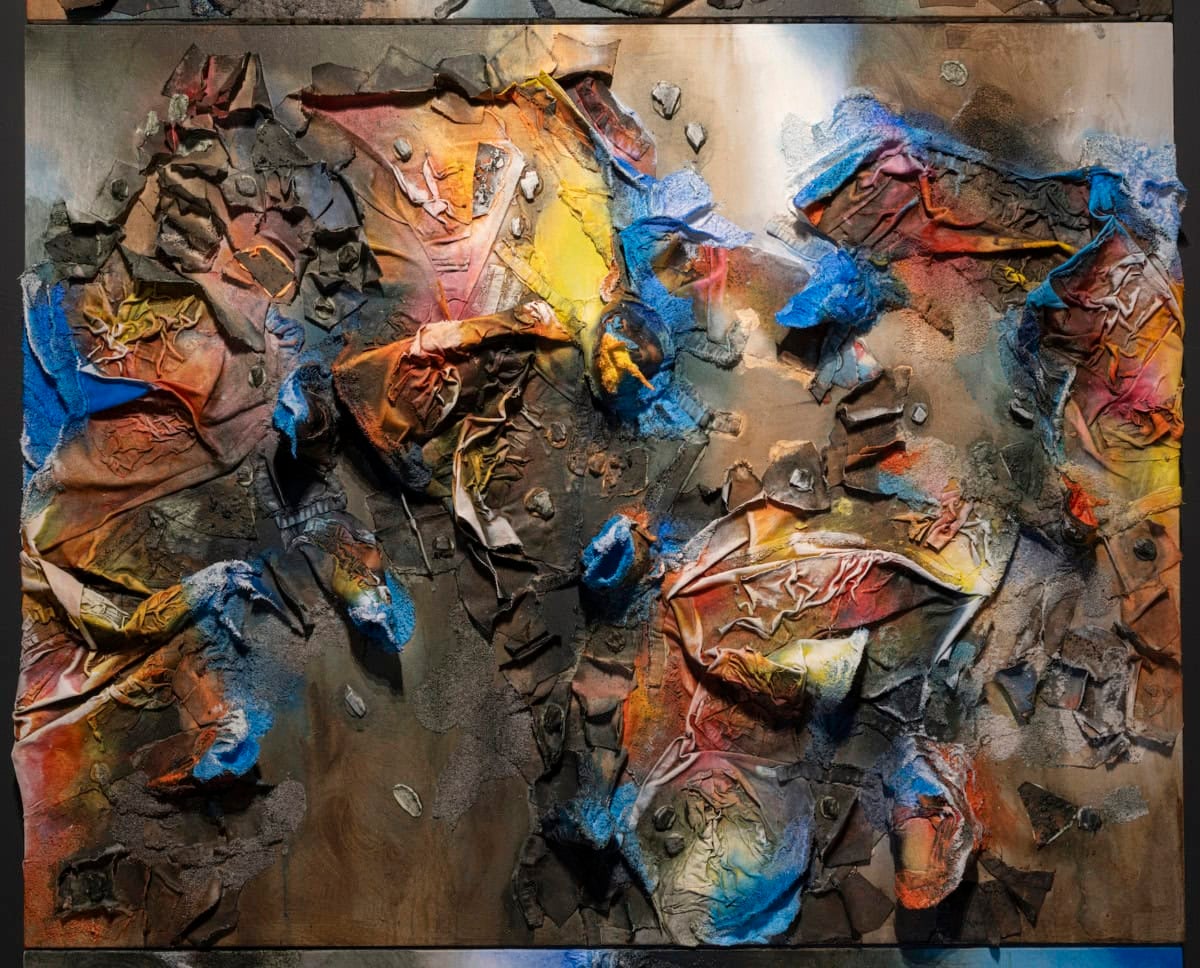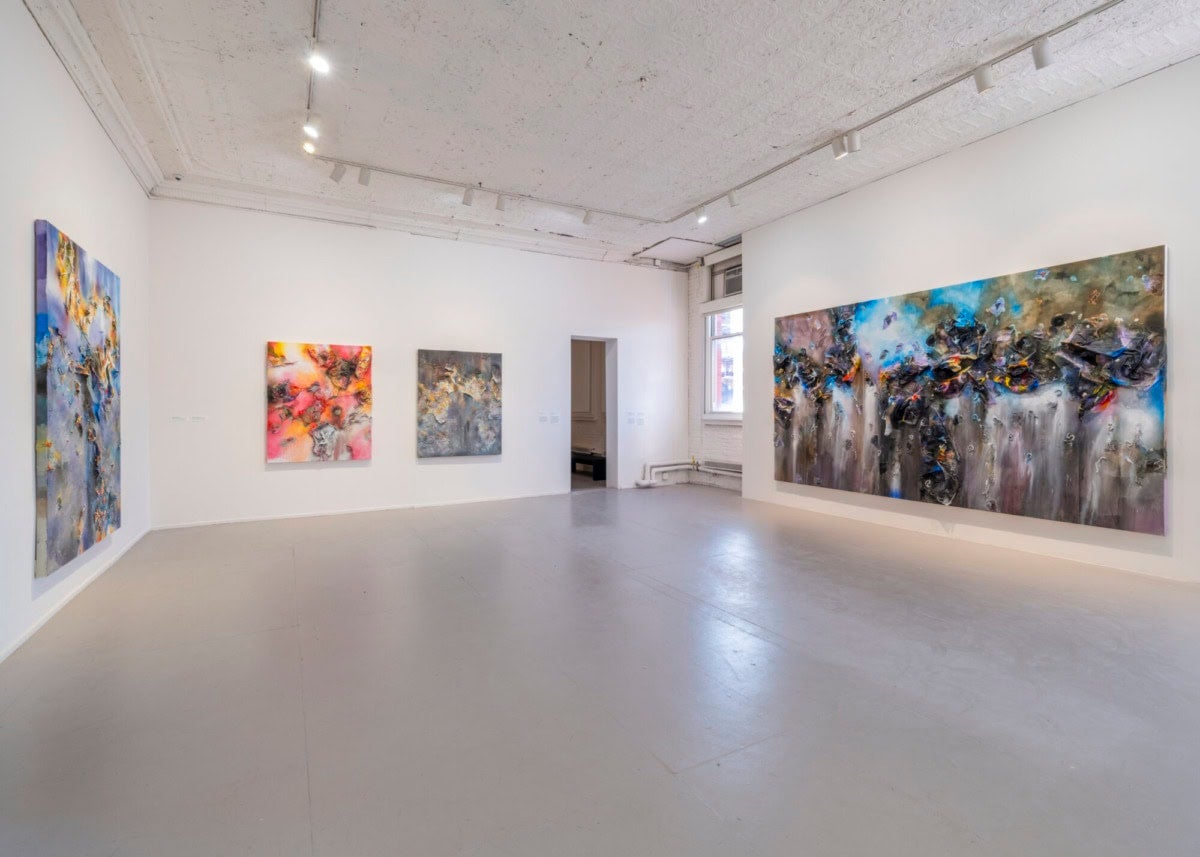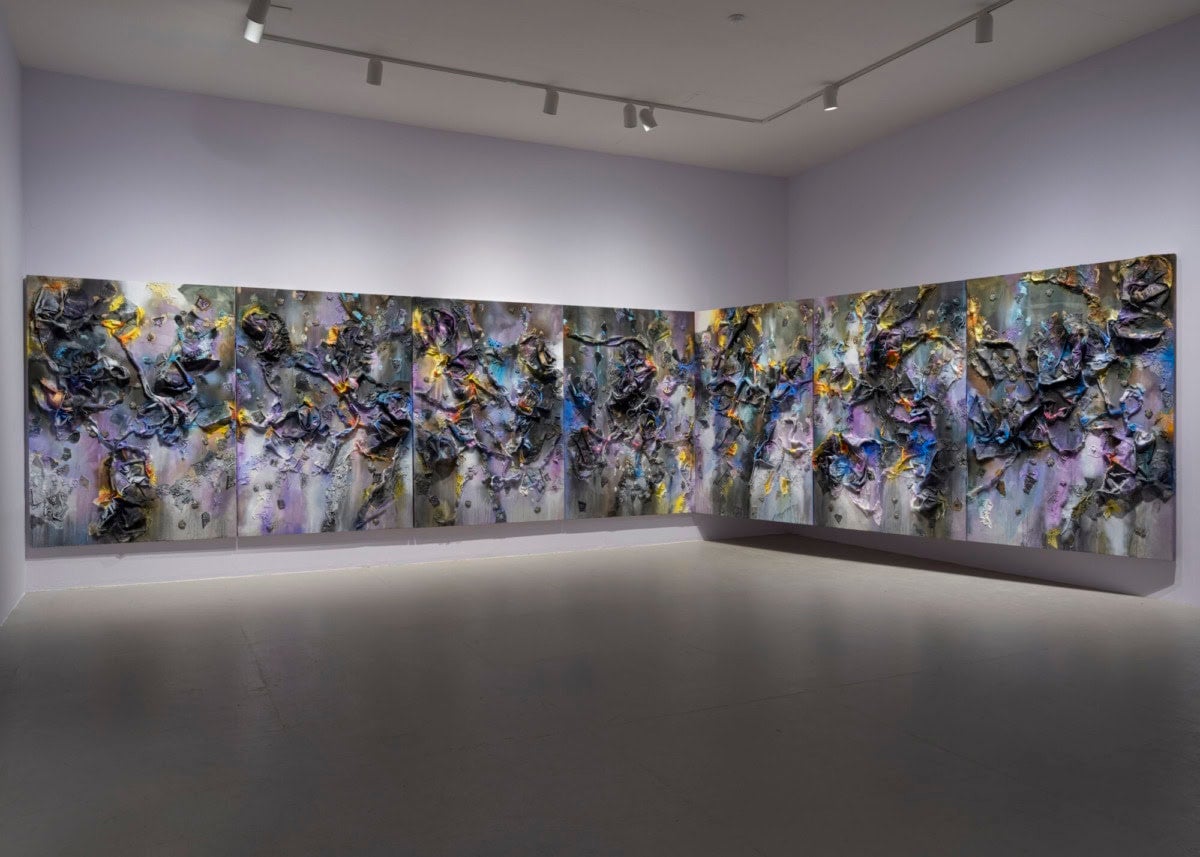
Dallas-based abstract painter Leslie Martinez belongs to a respected tradition of picturing the state-less and the disenfranchised through bodiless garb, as seen in works by Christian Boltansky, Kader Attia, and other notable artists. A few years back, the artist started to receive increasing attention for their colorful abstract canvases that incorporate fabric, urban detritus, and psychedelic pigment in energetic swirls. The texture reminds one of a 70s tie-dye, so it’s no wonder that their paintings have the energy of the infamous end scene from Michelangelo Antonioni’s Zabriskie Point (1970).
Seen in their first solo museum show in New York at MoMA PS1, the paintings connect to deeper histories of formal invention. Some of the pieces aim for the scope and weight of Post-War Europeans such as Anselm Kiefer or Alberto Burri, The differences pronounce themselves through energetic and vibrant hues that Martinez employs. In most paintings on display, their palette can be confidently called ‘queer,’ with rainbow colors dancing on the canvases. They are not afraid of pink, yellow, and baby blue, boldly contrasting the color choices with heavy and politically charged context of their work. Through this, they arrive at a different kind of transcendence, one that dresses the buried weight of contemporary politics in appealing hues of gay nightlife. In this, Martinez feels of the current moment, when young people of a liberal disposition react to cascading nightmares of capitalism, extraction, and war with a kind of flamboyant desperation, amplified by the ever-evolving quality of the smartphone’s camera.

Martinez frequently mentions ‘futurity’ as a concern, citing Texas’s ongoing border conflict and the visibility of ecological collapse. Every now and then, the titles address the precise conditions in which a queer abstract artist finds themselves. Probably the darkest vision in the show is related to climate change. For a monumental work, Slow Burning Line (2021), Martinez mixed rocks, twigs, charred oak, and ash that they found in the debris after The Great Texas Freeze of the same year. If you mentally remove the color from many of their paintings, you find an expressive disorder typical of the aftermath of a deluge. In Slow Burning Line the predominant hue is black, and that’s a surprising choice. In this case, black is somber and final, counterintuitive to Martinez’s usual sense of color.
The Foam of a Violent Shake (Don’t Tread on Me) (2023), a vertical triptych made for the PS1 show, references a slogan from the Revolutionary War. That phrase, printed over an image of a snake, is still a fixture of Texan highways once you leave the big city blue, along with ‘Come and Get Em’ (guns, of course). If you squint, Martinez’s painting reads like an eighteenth century battle scene, guns blazing with scarlet and yellow, sculptural waves of used rags and clothes clashing with deadly force. The Reconstitution of Rejected and Refracted Voids (2023), a monumental painting that takes up two walls, was made in communion with members of Martinez’s family, some of whom work in construction. Every part of this imposing work traces and manifests collective labor that went into its making. The ordinary materials are heavy with past use, and the effect is that of light passing through different surfaces, calculated to reflect “a political culture of conspiracies, entrenched polarization, dehumanization, and political violence,” in the artist’s words. No painting can be tasked with addressing all of this, but its post-apocalyptic materiality might contribute to a more grounded debate on these issues.

Leslie Martinez: The Fault of Formation is on view at MoMA PS1, New York through April 8, 2024.




